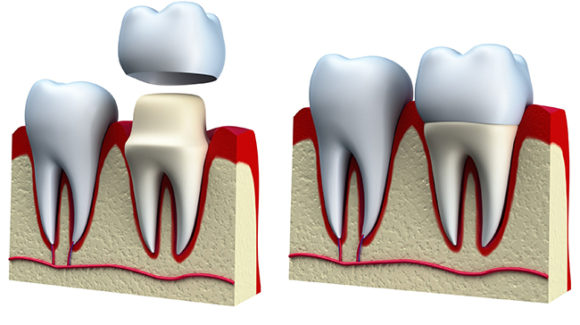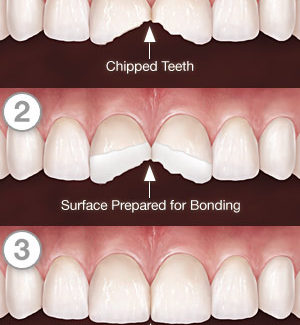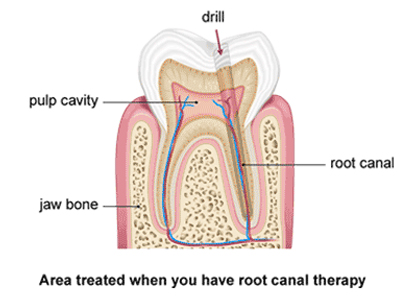Service Details
Dental Examination
It is important to have an oral examination at least once a year to check the health of your gums, teeth and surrounding tissue .This is carried out by your dentist and often includes X-rays. Once any problems have been identified your dentist will discuss what treatment options are available to you.
What will this involve?
Examination for tooth decay: All tooth surfaces will be checked for decay along with existing restorations and crowns.
Gum disease evaluation: Check the gums and bone around the teeth for any signs of periodontal disease.
Oral cancer screening: Check face, neck, upper tongue and lips for any signs of cancer.
X-rays: Essential for detection of decay, cysts, bone loss. X-ray helps determine tooth and root position.

Dental hygiene and Prevention
Prevention includes regular dental exams, cleaning and x-rays. Fissure Sealants and fluoride are also a great preventive treatment that helps protect the teeth. Preventing dental disease starts at home with good oral hygiene and a balanced diet. It is continued in the dental surgery by the efforts of your dentist and dental hygienist to promote, restore and maintain your oral health.
Treatment carried out by hygienist includes:
Oral hygiene instruction: our hygienist will demonstrate how to maintain good oral health with a proper brushing technique and use of interdental aids such as floss and interdental brushes
Removal of calculus: this is hardened plaque that has been left on the tooth for some time and is firmly attached to the tooth surface. It is removed with special dental instruments.
Removal of plaque: plaque is a sticky film that forms on the teeth and it consists of living bacteria food debris and saliva. If left on the teeth it can cause gums to bleed. This inflammation is the start of periodontal disease.
Teeth polishing: removes stain and plaque that is not removed during tooth brushing and scaling.
Treatment of Periodontal disease
If calculus and plaque continues to build up the gums begin to recede from the teeth and pockets form between teeth and gum and fill with bacteria. Gums become irritated inflamed and bleed. Bone loss may occur.
Periodontal disease has been linked with a number of health risks including heart disease and diabetes
Treatment involves:
Before any periodontal treatment commences it is essential to record the dept of any gum pockets and the amount of plaque and bleeding present .This allows to assess how treatment is progressing and if further specialist treatment is required .
Cleaning the Root surfaces of all teeth with instruments that removes any hardened plaque and allows the gum tissues to heal. This is carried out when the gum tissue is numbed.
This may take one to two visits and follow up maintenance every four to six months.

Before and after a dental visit.
Restorations
With increase patient awareness the incidences of tooth decay has decreased. However, should your teeth require restorative treatment we will discuss the options for restoring the tooth back to its normal shape, appearance and function.
Reasons for restorations
Relieve dental pain
Repair damage/decayed teeth
Fill in unattractive spaces
Restore eating and chewing
Enhance dental smile
Forms of restoration
Composite Restorations
These are (tooth coloured fillings) which are used to repair a tooth that has been affected by decay or fractures. Since they are tooth coloured they can be closely matched to the colour of existing teeth. They are strong and will last many years but as with most dental restorations they are not permanent and may someday have to be replaced. It is normal to experience sensation to hot and cold with composites which usually subsides shortly after placement.
Amalgam Restorations
Amalgam is another dental filling material that has been used for over 150 years around the world. It consists of a mixture of metals, liquid mercury, powdered silver and tin and copper giving a silver appearance. They are strong, long lasting and less likely to break than other types of filling especially in the back of the mouth. There has been a lot of concern regarding the presence of mercury in metal fillings. The Federal Drug Administration of America continue to evaluate and update evidence based research which has not established any association between dental amalgam and any adverse health effects in the general population. If your existing amalgam restorations are in good condition it is not recommended to remove or replace them as it would result in unnecessary loss of healthy tooth structure. Deciding on the best material to treat dental decay is a choice that can be discussed with us.
Cosmetic Dentistry
Crowns
A crown is a covering that encases the entire tooth surface to restore to its original shape and size. It protects and strengthens a tooth that cannot be restored with a filling. There are several types, porcelain which is tooth coloured, gold or a combination of metal and porcelain. They have high durability and will last several years but may eventually need to be replaced.
Why need a crown?
To improve the appearance of heavily filled or discoloured teeth.
Broken teeth.
A tooth with a root canal treatment. This usually requires two appointments.
The first appointment involves preparing the tooth and taking highly accurate moulds. The second appointment is fitting the new crown and restoring the tooth to its natural colour and shape
Veneers
Veneers are wafer thin custom made shells that are bonded onto the front of the teeth. They can be used to improve the colour, shape and size of teeth and are made from porcelain or resin.
What is involved?
Usually two visits. The first appointment involves preparing the tooth and taking highly accurate moulds and the subsequent visit is for bonding the porcelain and polishing to give that beautiful smile.

Example of how a crown fits onto a tooth.
Teeth Whitening
Who doesn’t like a bright smile?
Tooth whitening is an effective and conservative way to improve the colour of your teeth. Whitening may not be for everyone but ideal for people who have healthy unrestored teeth. People with yellow tones to their teeth, as opposed to grey tones respond best.
In Carysfort Dental we make custom trays to fit the shape of your teeth and a gel (10% carbamide peroxide) is applied over a few hours.
Sensitivity after gel application is common and usually subsides after 24 hours
You must be at least 18 years old to have the treatment and under the law since 2012 a maximum concentration of 6% hydrogen peroxide can be used. Higher concentrations can cause uncomfortable side effects.
It can only be carried out under a dentist’s supervision. It is illegal for a beauticians, hairdresser or a salon to offer tooth whitening treatment using peroxides.

An example of dental whitening.
Dental Bonding
Is a procedure which a tooth coloured resin is applied and hardened with a special light to improve a person’s smile. This is often used to repair chipped or cracked teeth, close unsightly gaps or used as an alternative to silver amalgam fillings. It is one of the easiest and least expensive of cosmetic dental procedures.

The process of dental bonding.
Dentures
This is a removal appliance for missing teeth. They are made to resemble your natural teeth.
Trays are two types :
Complete – used when all the teeth are missing
Partial – used when some natural teeth are present.
The process of getting dentures requires several appointments as impressions or molds are taken and used to create your custom appliance.
Once fitted it is normal to experience difficulty speaking and chewing, some soreness, discomfort and increased saliva flow.
These symptoms will subside once muscles and tissues get use to the new dentures.

Children’s Dentistry
It is important that you bring your child to the dentist before they are 2 years of age. This allows advice about tooth brushing, tooth paste and their diet. It also allows assessment of children with early dental decay and helps the dentist look at the developing dentition. It is important to maintain the health of “baby teeth” as early decay can lead to problems with the developing permanent teeth.
If everything is healthy an annual visit with the dentist will be sufficient until 5/6 years of age.

Removal of Teeth
Why Teeth need to be remove
When a tooth is severely damaged it may need to be removed. Wisdom teeth often fail to emerge in proper alignment and become entrapped or impacted between the jaw bone and gum tissue. This can cause swelling, pain and infection of the gum tissue surrounding the wisdom teeth and may need to be surgically removed.
What’s involved?
The procedure involves the dentist taking an X-ray. This helps to determine the shape of the roots and any difficulty that is likely to occur.
A local anaesthetic is then given to numb the area. This prevents pain during the procedure but the patient will feel pressure applied to the tooth.
After the tooth is removed you will bite down on some gauze placed over the wound to stop any bleeding.
Your dentist will give you advice regards aftercare and a prescription or painkillers if necessary.
In most cases the recovery period lasts only a few days. This can be helped by:-
Avoiding smoking.
Eating soft foods.
No rinsing for 24 hours.
Keeping the area clean with gentle brushing.
Root Canal Treatment
This is needed when the nerve of the tooth is affected by decay or trauma in order to retain the tooth. The pulp (the living tissues) inside the tooth are removed and the space filled with special dental material which restores the tooth.
This can take one to two visits and involves isolating the tooth with a rubber sheet to prevent saliva and bacteria getting into the tooth. The inside of the tooth is cleaned, shaped and filled to restore to its natural form and function
Signs and symptoms that may need Root Canal Treatment
Sensitivity to hot and cold
Severe toothache
Pimple on gum
Sometimes no symptoms
Swelling

Conscious Sedation
Conscious Sedation is the safe and effective administration of a medicine that safely relieves anxiety, increases relaxation and makes the patient comfortable. Many procedures can be performed safely and efficiently and cost effectively using conscious sedation.
The versatility and safety of conscious sedation coupled with the many benefits makes conscious sedation a perfect choice for many dental procedures.
Not all patients are suitable for sedation and your dentist will need to take a thorough medical history and take note of any medication you are taking to see if you are an appropriate candidate.
Benefits of sedation:
Comfortable, practical and convenient for you and the Dental Surgeon. Safe due to single drug administration and lower levels used.
Time saving due to quick recovery and no need for hospital admission, minimized discomfort and anxiety.
Maximised cost effectiveness and treatment.

Emergency Treatment
Should a dental emergency occur, we make every effort to see and care for you as soon as possible. We offer a late evening appointment on Tuesdays.



